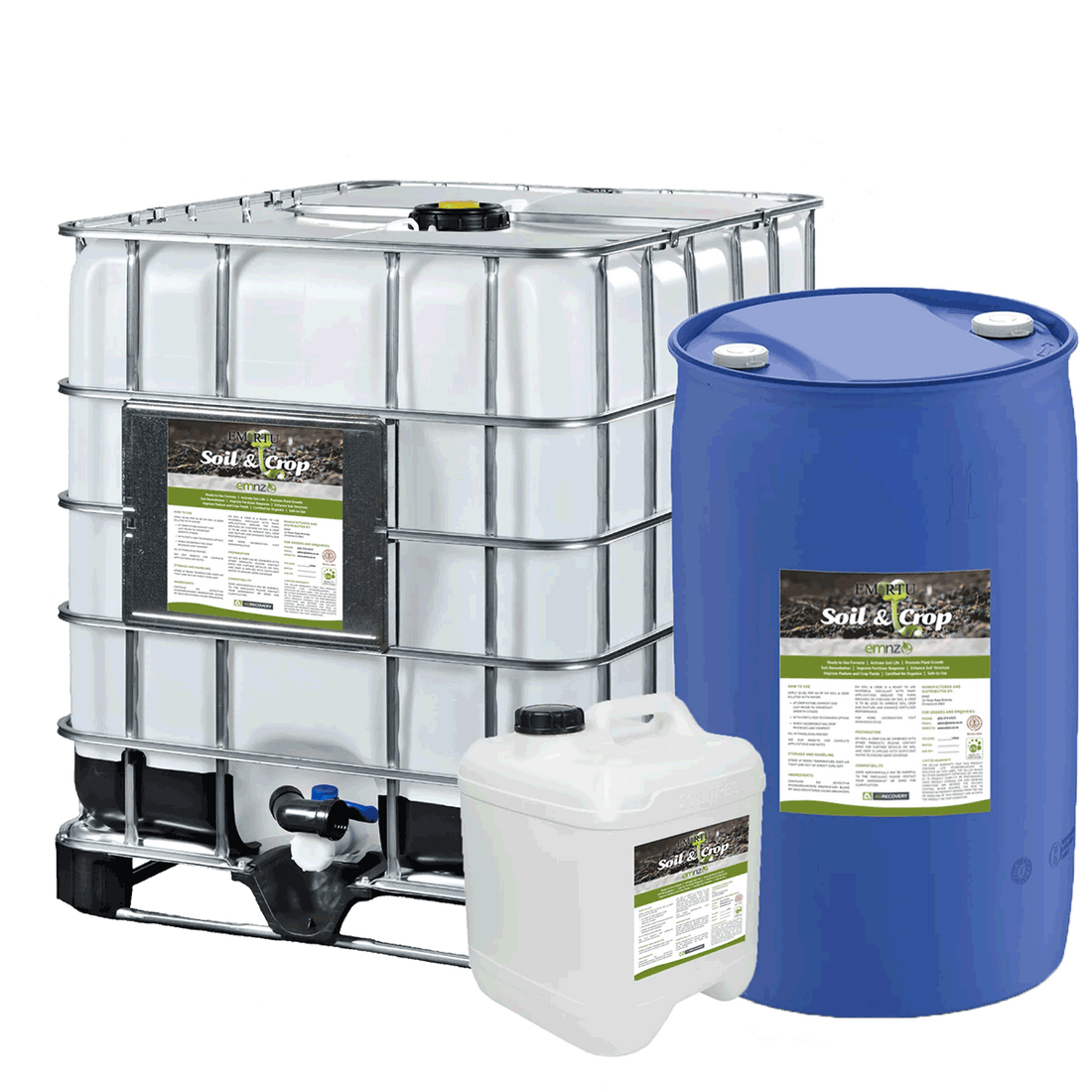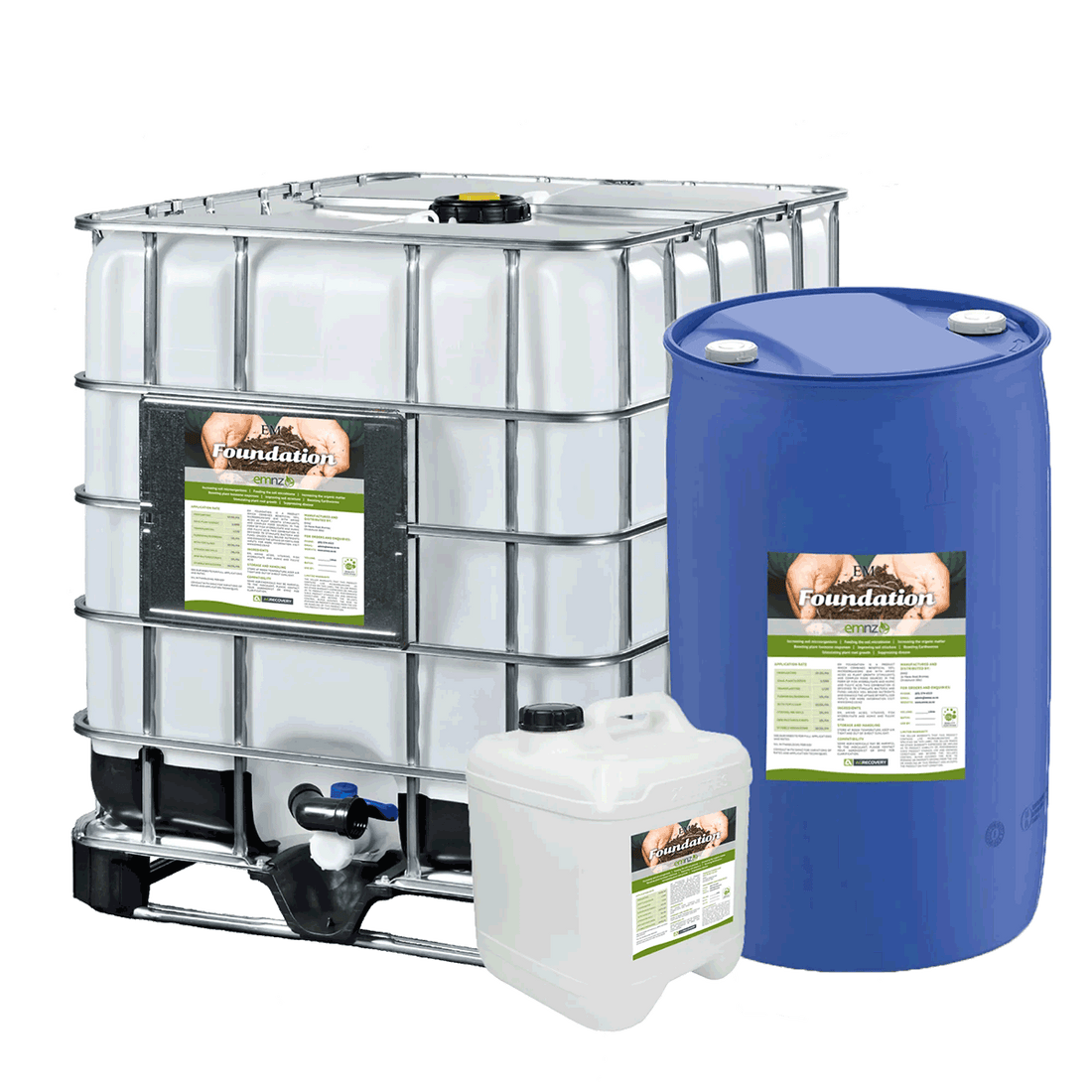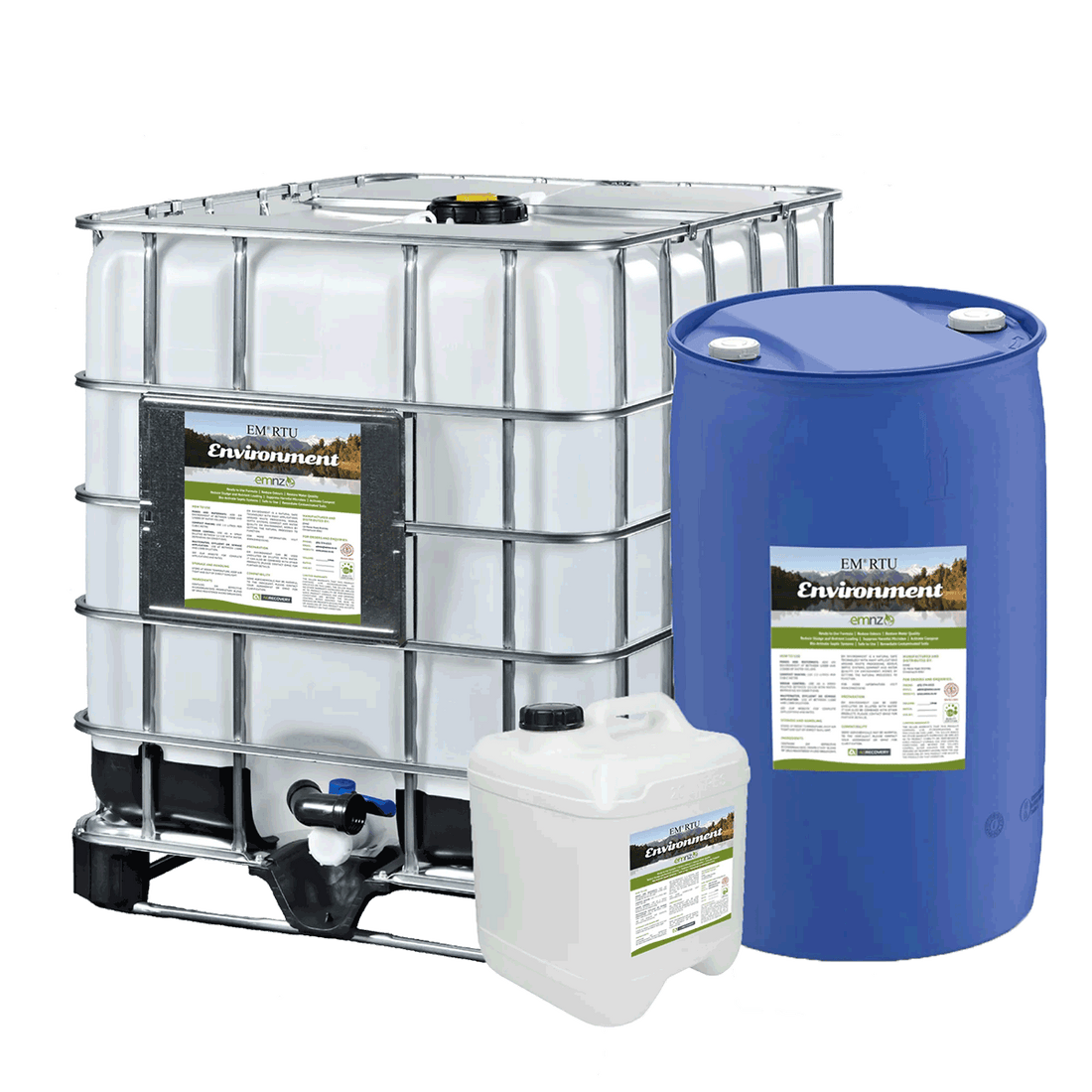Composting with EM™
Composting using EM is a safe and simple way of improving the effectiveness and output of your composting system. EM can be used in both aerobic and anaerobic composting systems and has many advantages over traditional composting. These include:
- High microbial content
- Increased composting speed
- High Energy(anaerobic method only)
- High Nutrient levels
- Fermentation rather than decomposition (anaerobic method only)
- No leaching
Aerobic Composting
EM will effectively enhance you aerobic compost system. It will give you a more complete breakdown of organic matter in your compost and also give you a higher quality. This means you will get a higher growth index and therefore better growth rate from plants as a result.
Anaerobic Composting
The EM anaerobic composting process is a fermentation gateway to very effective compost. The benefits over a aerobic composting system are that it doesn’t generate heat so therefore retains all of the energy usually lost. This makes it very effective and more digestable to the soil. The Anerobic system requires that the compost is packed down and covered with a plastic sheet and secured. No turning is required. This cover will prevent the loss of moisture, and also prevent leaching losses through excess rain. This compost will have higher energy and nutrient levels than a conventional aerobic compost because the heat generated is much lower, and no leaching occurs because of the cover. This process is similar to making silage where we get a process more towards fermentation than decomposition. A good example as to why this process is important is that as the silage process makes herbage more digestible to cows, this EM based composting process makes the material more digestible to the soil!
Composting Process
EM will speed up the composting process significantly with research showing they overall timeframe can be decrease by up to 30%, this is important as it allows you to get the compost into the soil quicker and also generate more compost over the course of a season.

Application Rates
First of all make sure the composting material is mixed well. EM can then be added at 3 litres per cubic metre of materials mixed with water as a carrier. Please make sure enough moisture is added to the compost with the ideal scenario having the compost should be 30-35% moisture.
Low Cost EM™ Use
For large scale use we recommend using our EM Soil and Crop product. This is our expanded ready to use product and is the most cost effective way to use EM. It can cost as low as $2 per litre depending on volume purchased (please contact us for volumes in excess of 200 litres). We recommend using 15-20L per hectare when using EM by itself or 5-10L per hectare when used in conjunction with other nutrients.
Please contact us for more information on how to make EM as cost effective as possible.
Example Recipe for compost at Seresin by Bart Arnst
- Activite EM at least 1 week prior to making the compost
- For each cubic metre of grape marc, you add 1 cubic metre of sawdust/paper waste. To this (optiona) you add 2kg of rock phosphate and 200 g. of elemental sulphur.
- Mix ingredients thoroughly and as you do so gradually add the EM-A. Aim to add 3 to 5 litres per cubic metres of final mix.
- Make a compacted heap, and cover making airtight as possible with black plastic.
- Leave for 6 weeks.
Carbon-Nitrogen Ratio
It is important to maintain the proper balance in your compost particularly as these core ingredients to fuel the microbes.
Decomposition of organic materials in your compost pile is greatly increased when you create the proper balance between the carbonaceous materials (called BROWN because they are dry) and the nitrogen-rich materials (called GREEN because they are more fresh and moist).
In compost lingo, this balance is referred to as the Carbon-Nitrogen ratio, and shown as C:N.
For best performance, the compost pile, or more to the point the composting microorganisms, require the correct proportion of Carbon for energy and Nitrogen for protein production. Compost scientists have determined that the fastest way to produce fertile, sweet-smelling compost is to maintain a C:N ratio somewhere around 25 to 30 parts Carbon to 1 part Nitrogen, or 25-30:1. If the C:N ratio is too high (excess Carbon), decomposition slows down. If the C:N ratio is too low (excess nitrogen) you will end up with a stinky pile.
Compost comparison at Seresin
A comparison of EM compost; Influence of grape compost amendment on Mustard and Radish components; fresh weight means (g/plant) (exp. conducted by BHU Lincoln)

A comparison of EM compost; Influence of grape compost soil amendment on yield characteristics of lettuce variety ‘Triumph (g/plant) (exp. conducted by BHU Lincoln)

Extracting nutrients from grape marc Bart Arnst expt. March 2010
In 2 barrels each with 100 litres of water I hung a sack with approximately 10kg of grape marc (skins/seeds remaining after juice pressed out).
Sample A had approximately 10 litres of expanded EM added (this was the residue from a 200 litre batch of EM-A.
As you can see the extraction of the nutrient is mostly doubled in sample A (see Hills report).

Using EM™ to make compost from grape marc waste
Shop the range
-
EM1 Concentrate
 EM1 Concentrate
EM1 Concentrate- Regular price
-
$31.05 $436.58 - Regular price
-
- Sale price
-
$31.05 $436.58
Quick view
-
EM™ Animal - Animal Probiotic
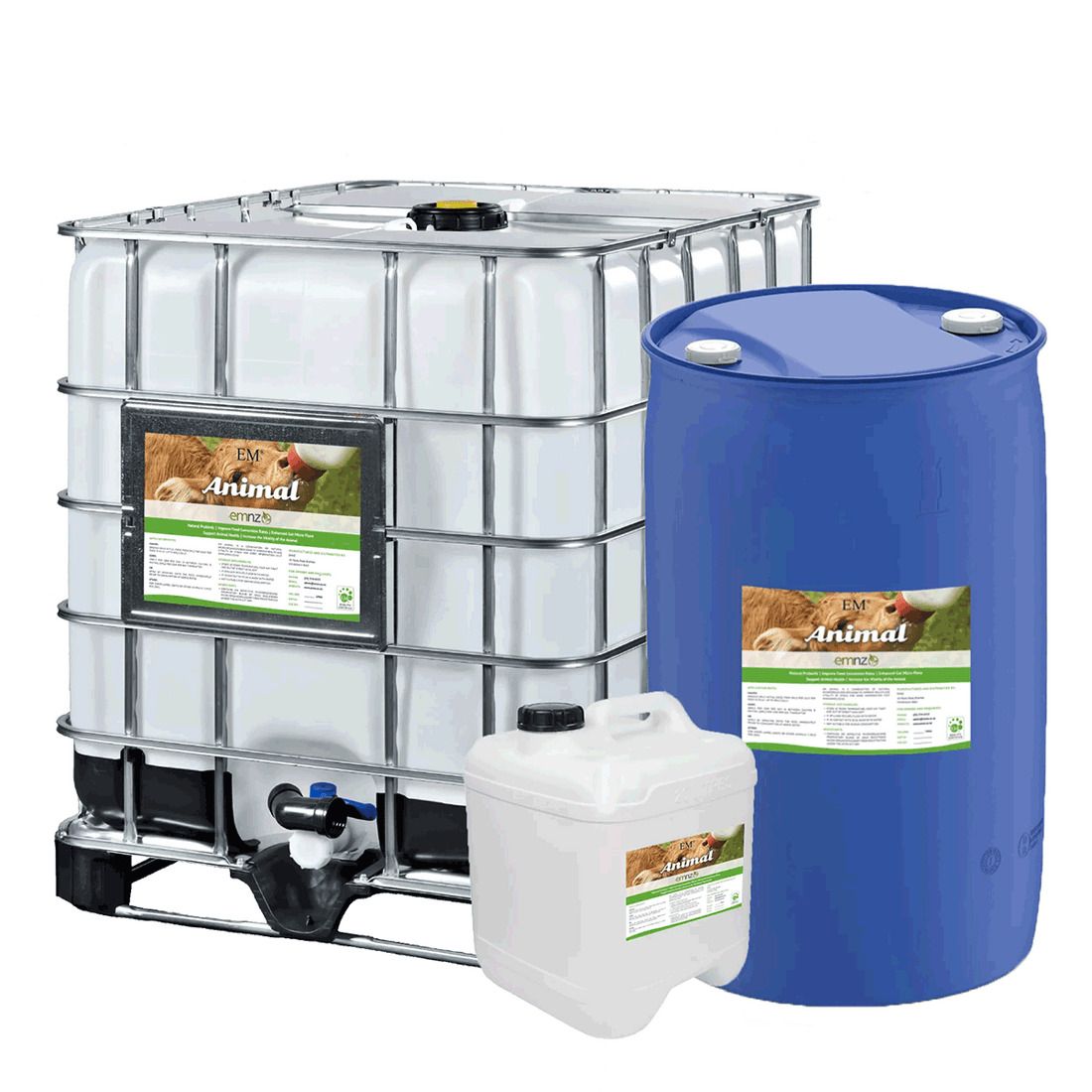 EM™ Animal - Animal Probiotic
EM™ Animal - Animal Probiotic- Regular price
-
$70.65 $145.20 - Regular price
-
- Sale price
-
$70.65 $145.20
Quick view
-
EM™ Foliar Enhance
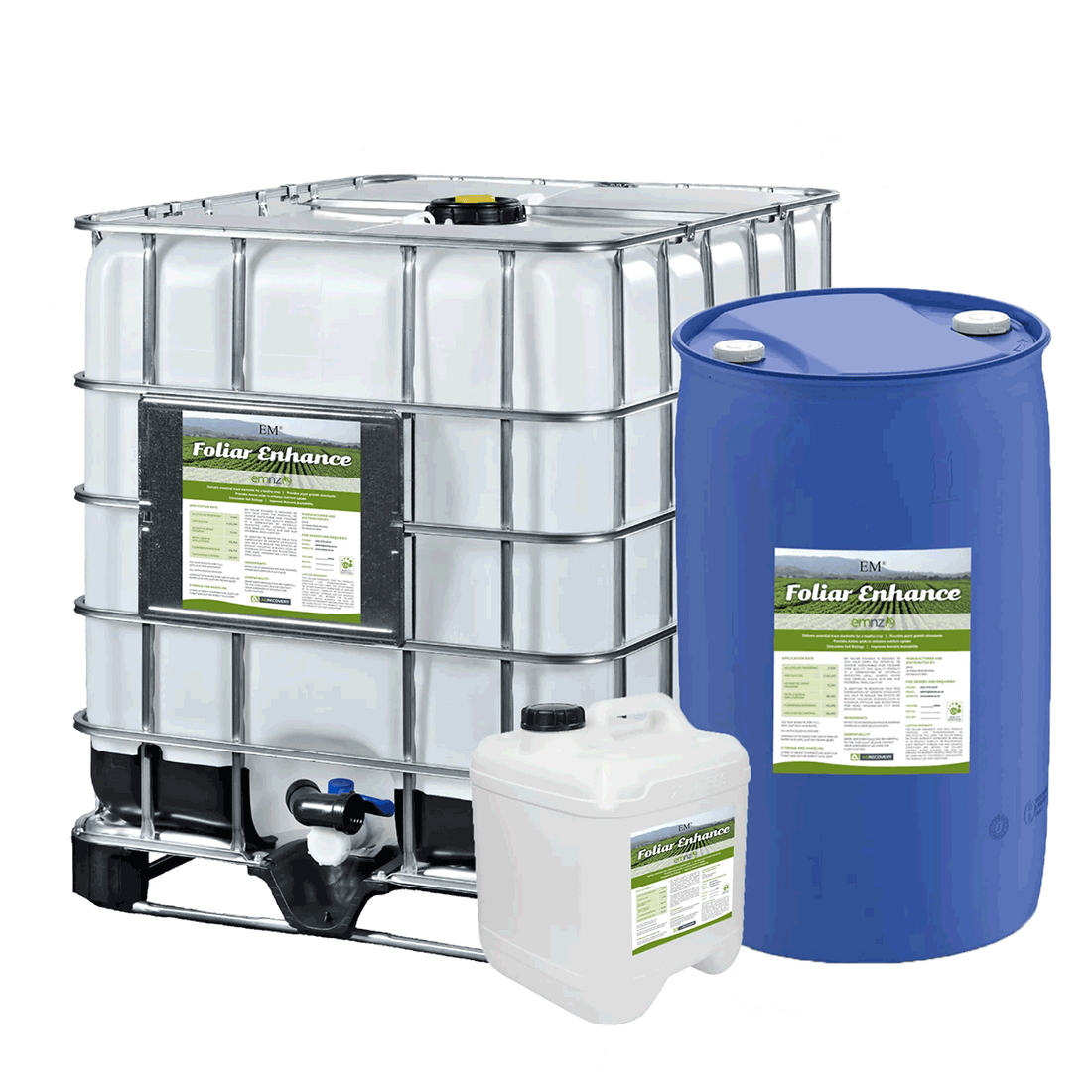 EM™ Foliar Enhance
EM™ Foliar Enhance- Regular price
-
$119.50 - Regular price
-
- Sale price
-
$119.50
Quick view



